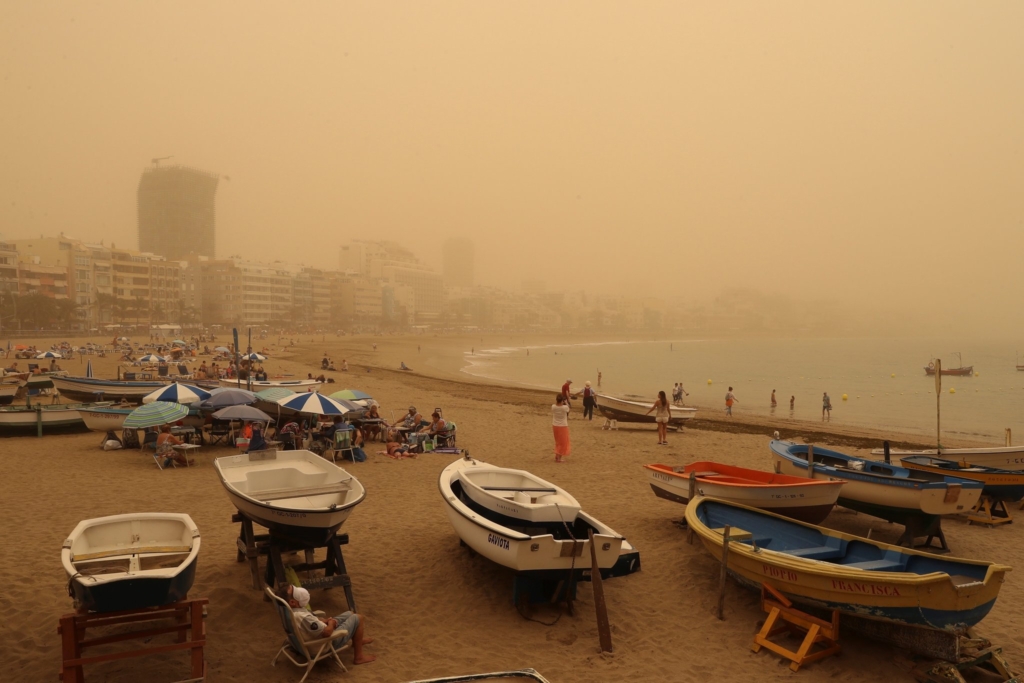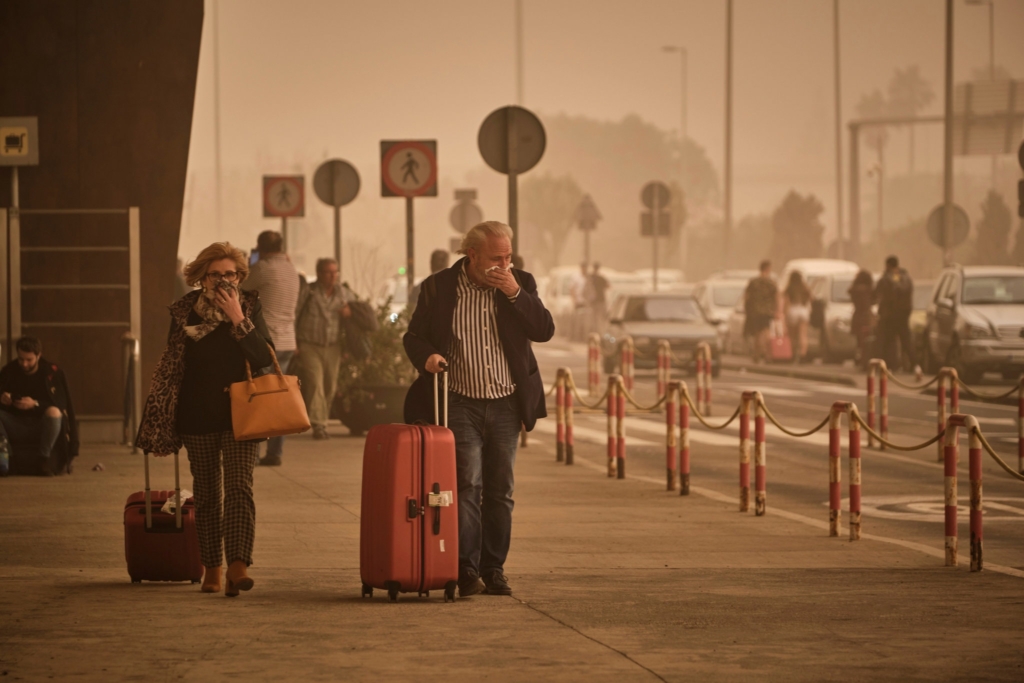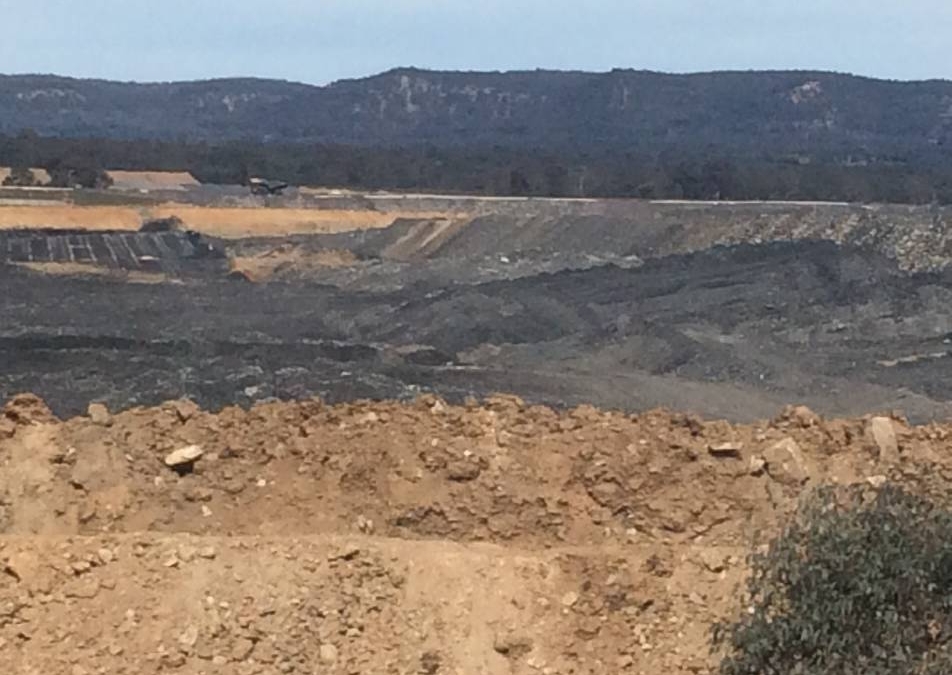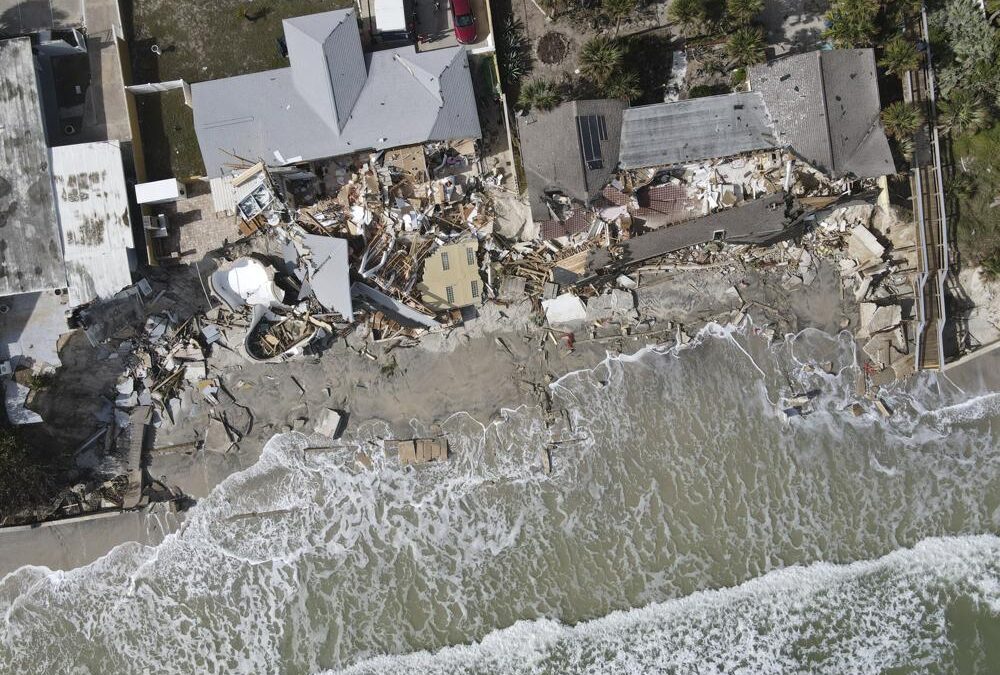Sandstorm wreaks havoc in Canary Islands, worst such storm to hit the islands in 40 years – “I’m old enough to know all about the calima, but I don’t recall it that strong. Everything just turned red.”

By Raphael Minder
24 February 2020
MADRID – Winds from the Sahara continued to send streams of sand drifting over the Canary Islands on Monday, creating chaos as the swirling sands forced planes to be grounded, disrupted traffic and exacerbated wildfires.
Ángel Víctor Torres, the regional president of the islands, a Spanish archipelago, told Spanish national television that it was the worst such storm to hit the islands in 40 years. He described its arrival as “a nightmare weekend.”
He said on Monday that the situation remained worrying on at least four islands, including Gran Canaria, which faces the greatest threat of wildfires.
The Spanish airport operator, Aena, reopened the archipelago’s airports on Monday, although it said that traffic would resume gradually and advised passengers to check with the airlines before heading to the airport. All of the islands’ airports were shut on Saturday because of strong winds and low visibility, leaving thousands of tourists stranded.
Primary schools remained closed on Monday, with the authorities also advising residents to keep their windows shut and stay indoors, particularly people with respiratory problems.
The weather phenomenon, known as a calima, occurs when a burst of dusty, warm wind forms during sand storms in the Sahara and then crosses over from the African desert. The Canary Islands are in the Atlantic off the western coast of Morocco.

The weekend arrival of the calima brought wind speeds of more than 80 miles per hour to many parts of the archipelago and shrouded cars and buildings in red sand dust. In the smaller island of La Palma, fierce winds tore down lamp posts, palm trees and a wall along a main road, burying parked cars in debris.
The sandstorm reduced visibility so heavily in some places that many roads were closed, and drivers who did venture out crawled nearly to a halt as they struggled to see.
Manuel Campos, a 71-year-old entrepreneur who lives in Las Palmas, the capital of Gran Canaria, said by telephone that he had canceled a planned weekend beach outing and stayed in his house, in line with the authorities’ recommendation to avoid being outdoors.
“I’m old enough to know all about the calima, but I don’t recall it that strong,” he said. “Everything just turned red.”
In the archipelago’s main towns, those who braved the winds and took to the streets mostly shielded their faces with masks or neckerchiefs to avoid inhaling the red dust particles.
The dust resulted in Gran Canaria having the worst air quality in the world over the weekend, according to local news reports, with about 40 times the density of particles considered safe by the World Health Organization.
The strong winds also fueled the spread of wildfires on the islands of Tenerife and Gran Canaria, with one blaze consuming a banana plantation on La Palma.
On Gran Canaria, a fire destroyed hundreds of acres of land over the weekend and forced the evacuation of hundreds of people. With pilots unable to fly aircraft to assist firefighters on the ground, the fire continued to burn, threatening to spread further into the Inagua nature reserve. [more]


